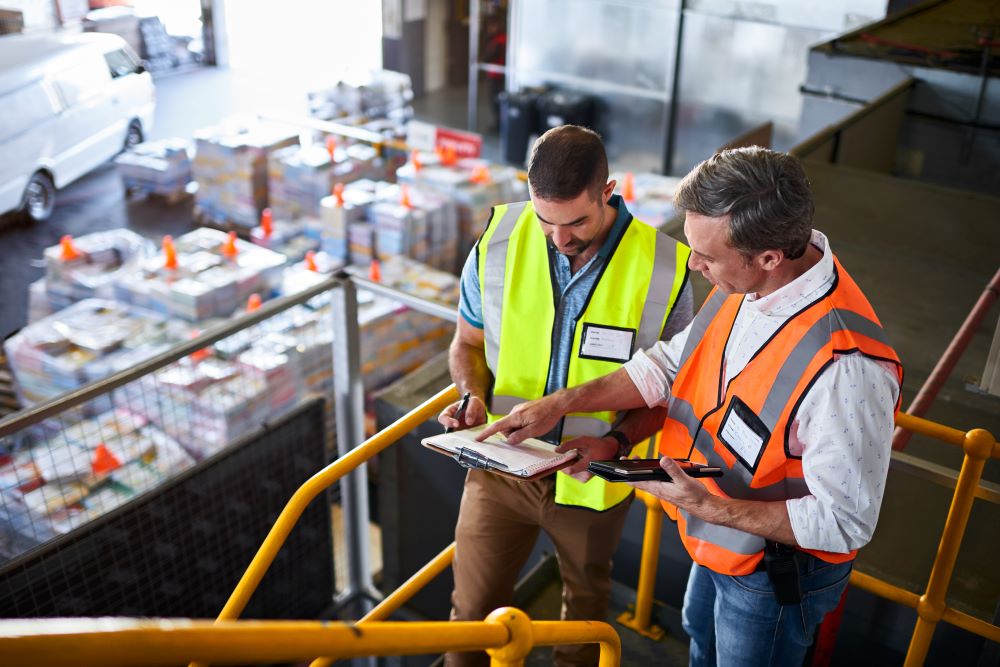Health and safety policies are standard for any type of work, with safe systems put in place specifically for activities that pose risks to workers’ safety. Ideally, all hazards are completely eliminated and the risks are minimal enough for workers to get their jobs done. However, there are certain types of work that have ever-present hazards, and the risk of getting injured or sick remains relatively high even with safety measures in place. For such jobs, there are special permits required before they can get the greenlight.
Permit to Work Defined
Hazardous, high-risk work requires a permit to work. It is a formal system that allows workers to perform specific tasks that follow a strict set of conditions and procedures for work that involves significant risks. A permit to work details:
- what type of work it is (hot work, electrical work, confined space, etc.)
- where it is taking place
- what plant or equipment is to be used
- what personal protective equipment (PPE) is necessary
- what precautions need to be taken
- what hazards are present
- how the job must be done safely and efficiently
- how long it should take
- what conditions need to be met after the work is done
- who needs to be informed of and can authorise the planned work activities
By providing all this information, it sets out to control risks in more hazardous workplace environments.
Only a competent person in a position of authority can decide if a permit to work is necessary. It is also only within the power of a competent authority figure and the person managing the project to sign off on a permit to work.
A permit to work only applies for the specific job it is created for within the specific conditions that it has set. It has to be formally cancelled by the people in charge once it is done. In the event the work is not completed within the agreed duration, the authorised person has to endorse an extension for the permit or cancel it then issue a new one.
Permit to Work Purposes
The top priority for having a permit to work is to prepare workers to be as safe as possible as for high-risk, hazardous work. It arms workers with the knowledge to tackle tasks in such a way that minimises the dangers that naturally come with the specific job they have to do. They will know what to do and what not to do.
Moreover, the permit-to-work system acts as a multi-layered safeguard for getting hazardous work done safely. Such work activities cannot start until a permit is requested, assessed, and authorised. Every step in the process has to be thoroughly checked and documented. If any element is not up to standard, the work does not begin, as people’s lives can be endangered.
As documents have to get written clearance from authorised persons as well as acknowledgement from workers, the permit-to-work system also creates clear accountability. It instils a greater sense of responsibility across all parties. Managers and supervisors will be compelled to communicate all the important information as clearly as possible, while workers will have to respect and follow the procedures and instructions.
Having a formal documented process that a permit to work system entails will also be helpful in improving health and safety policies. Failures and near-misses are more likely to be corrected when there is proper documentation.
When to Use a Permit to Work
While employers are required to have a safe system of work in place, not every type of work requires a permit to work. The following are the most common situations where a permit to work is necessary, and the list is not meant to be exhaustive.
Hot Work — Work where enough heat is used or produced to cause an ignition. Examples of hot work are welding, soldering, grinding, metal drilling, and flame cutting.
Cold Work — Work where the use of equipment or any form of machinery does not generate enough heat to cause an ignition but can still cause injury. Examples of cold work are chemical cleaning and mechanical bending and shearing.
Chemical Work — Work with harmful chemical substances as well as in toxic or corrosive chemically induced environments, such as in chemical plants and labs.
Electrical Work — Work with live high-voltage or complex electrical equipment. Examples include installing electrical conductors, maintaining lock-out systems, and inspecting utility poles.
Height Work — Work in elevated spaces that are at least two meters above ground, such as when using ladders, scaffolding, crane lifts, and mobile elevating work platforms (MEWPs).
Ground Disturbance — Work that involves excavations, such as mining, construction, and archaeological digs.
Confined Spaces — Work in tight spaces where there is a risk of crushing or asphyxiation through getting trapped or engulfed in a toxic atmosphere. Confined spaces include vents, tanks, and sewage systems.
Breaking Containment — Work where there is a risk of releasing hazardous gases or liquids, such as in the oil and gas industry.A permit to work is required whether employees, contractors, or subcontractors are going to do the work.
Permit to Work Procedure
The person requesting a permit to work has to complete a request form. It should have all the important details about the work that will be done, including:
- Name of the person making the request
- Name of the authorising person
- Location, date, and duration of the work
- Description of the work
The person that is authorised to issue a permit to work has to be trained and assessed as competent to do so. They are responsible for setting the precautions, procedures, and restrictions for the work.
This authorised person then has to make sure that the person requesting the permit to work fully understands all the requirements. They also have to explain the precautions and procedures to every worker involved, as well as address any issue immediately, whether it’s to resolve it themselves or to bring it up to a higher authority.
Both the requestor and the authoriser must acknowledge that they understand the planned work with their signatures on the form.
Upon meeting the end date of the work, the person in charge of the work must sign the permit, whether the job is done or delayed.
An extension would have to be signed in case it is necessary, ensuring the location is still safe and the control measures are still in place to continue the work.
If the work is completed, the person in charge must sign a hand-back certifying that the job is done and that the location is safe.
Lastly, the authorised person who issued the permit has to sign the form acknowledging that the permit is now cancelled, and that the job is done and the location is safe.
A Permit to Work is Only Part of the Process
The hazardous nature of some work makes the permit-to-work system essential to keeping workers healthy and safe. However, it alone does not guarantee safety. Every person involved in the work has a personal responsibility to adhere to the system. A permit to work is also not a replacement for risk assessments, method statements, and safe systems of work. It is an integral element of an overarching health and safety structure. Establish a solid foundation for your organisation’s health and safety policies with the help of The Health & Safety Dept. We have years of experience assisting businesses and institutions across various industries implement and manage safe systems. Contact us today to get started.



